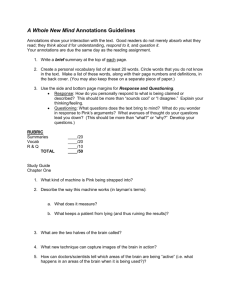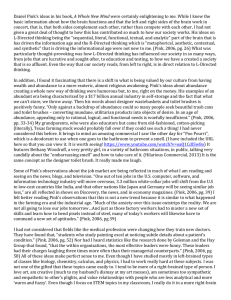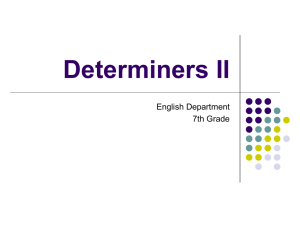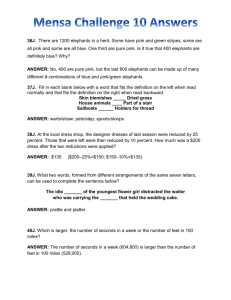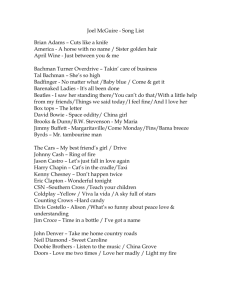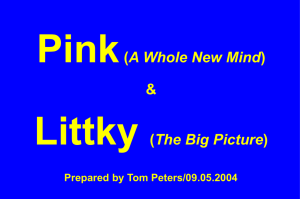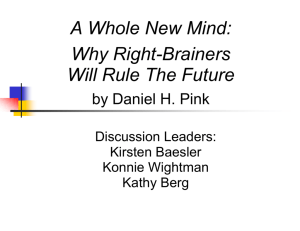A Whole New Mind by Daniel H. Pink Part I – Chapters 1
advertisement
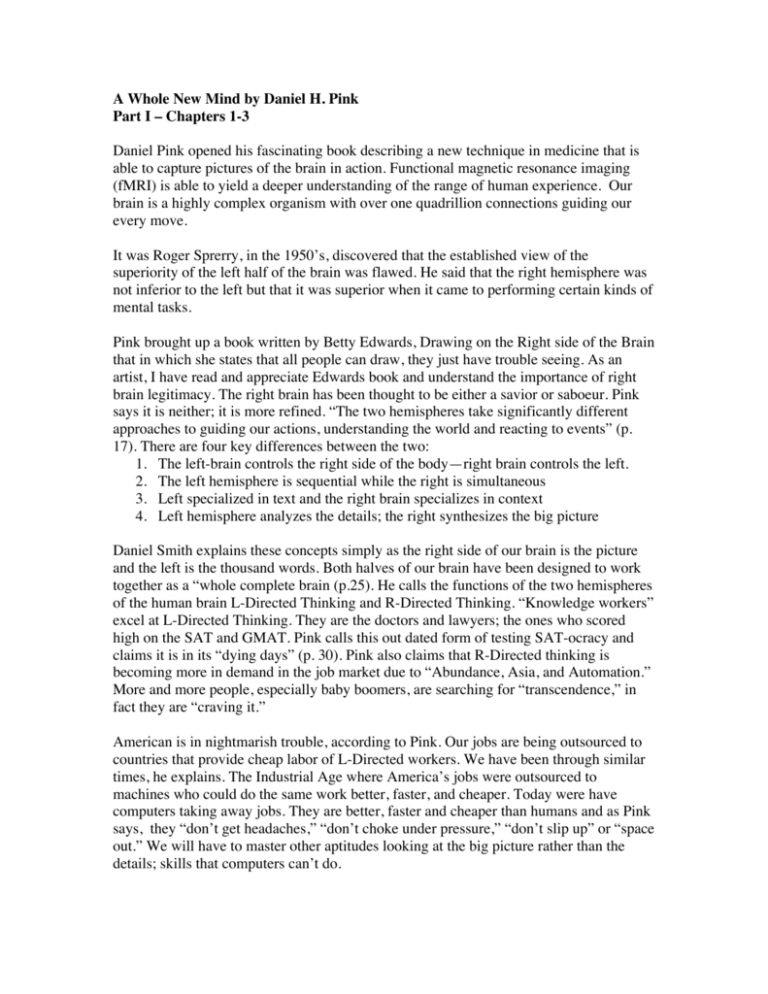
A Whole New Mind by Daniel H. Pink Part I – Chapters 1-3 Daniel Pink opened his fascinating book describing a new technique in medicine that is able to capture pictures of the brain in action. Functional magnetic resonance imaging (fMRI) is able to yield a deeper understanding of the range of human experience. Our brain is a highly complex organism with over one quadrillion connections guiding our every move. It was Roger Sprerry, in the 1950’s, discovered that the established view of the superiority of the left half of the brain was flawed. He said that the right hemisphere was not inferior to the left but that it was superior when it came to performing certain kinds of mental tasks. Pink brought up a book written by Betty Edwards, Drawing on the Right side of the Brain that in which she states that all people can draw, they just have trouble seeing. As an artist, I have read and appreciate Edwards book and understand the importance of right brain legitimacy. The right brain has been thought to be either a savior or saboeur. Pink says it is neither; it is more refined. “The two hemispheres take significantly different approaches to guiding our actions, understanding the world and reacting to events” (p. 17). There are four key differences between the two: 1. The left-brain controls the right side of the body—right brain controls the left. 2. The left hemisphere is sequential while the right is simultaneous 3. Left specialized in text and the right brain specializes in context 4. Left hemisphere analyzes the details; the right synthesizes the big picture Daniel Smith explains these concepts simply as the right side of our brain is the picture and the left is the thousand words. Both halves of our brain have been designed to work together as a “whole complete brain (p.25). He calls the functions of the two hemispheres of the human brain L-Directed Thinking and R-Directed Thinking. “Knowledge workers” excel at L-Directed Thinking. They are the doctors and lawyers; the ones who scored high on the SAT and GMAT. Pink calls this out dated form of testing SAT-ocracy and claims it is in its “dying days” (p. 30). Pink also claims that R-Directed thinking is becoming more in demand in the job market due to “Abundance, Asia, and Automation.” More and more people, especially baby boomers, are searching for “transcendence,” in fact they are “craving it.” American is in nightmarish trouble, according to Pink. Our jobs are being outsourced to countries that provide cheap labor of L-Directed workers. We have been through similar times, he explains. The Industrial Age where America’s jobs were outsourced to machines who could do the same work better, faster, and cheaper. Today were have computers taking away jobs. They are better, faster and cheaper than humans and as Pink says, they “don’t get headaches,” “don’t choke under pressure,” “don’t slip up” or “space out.” We will have to master other aptitudes looking at the big picture rather than the details; skills that computers can’t do. According to Daniel Pink, we are now in the Conceptual Age in which the creator and the empathizer must master R-Directed Thinking is the key to professional achievement and personal satisfaction. We still very much need L-Directed thinking and together they make a “whole new mind” (p. 51). I find it interesting and scary at the same time that high tech is no longer enough and “thinking is necessary but no longer sufficient” (p. 61). It seems as though we just got here on the scale of things. The author says that high tech needs to be supplemented with “high concept and high touch” (p. 51). “We are all in the art business” claims Pink, and the “creative class” is finding its feet. Pink sees a better future for education, as do I; a learning environment without heavy, outdated textbooks and chalky blackboards and with endless battery of tests. The most significant change will be inside our hearts and souls. Daniel Pink has put a label on six aptitudes he calls the six senses: design, story, symphony, empathy, play and meaning.
